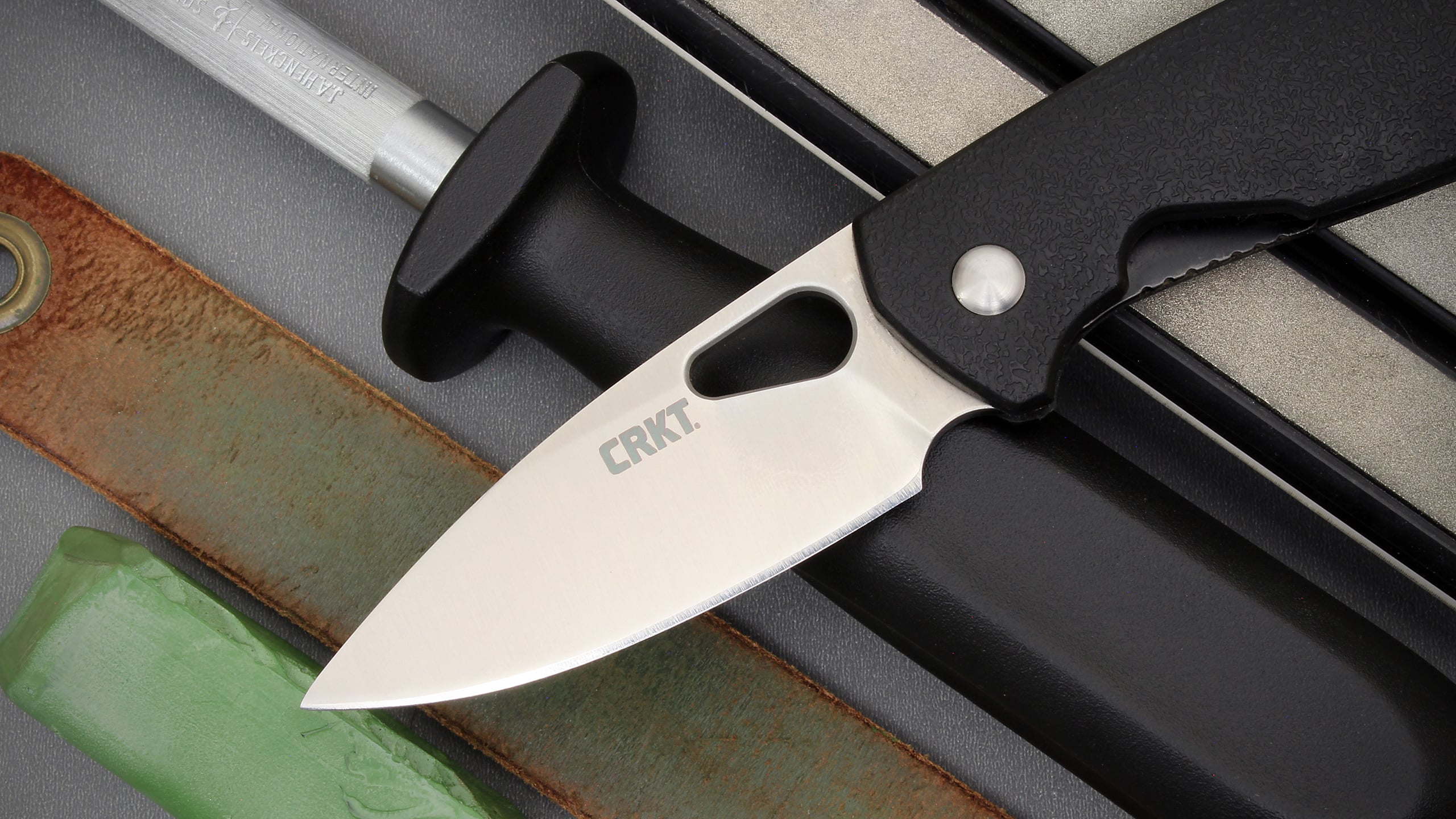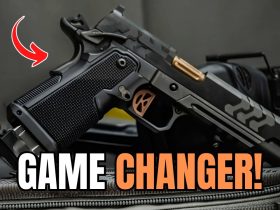We wouldn’t be so bold as to try to divide the history of self-loading pistols into distinctly defined “generations,” as though they were jet fighters or Chevrolet Camaros. On the other hand, it’s pretty easy to divide the manufacturing techniques of semiautos into generations.
GENERATIONS
The earliest self-loaders date from the dawn of the semiautomatic era, at the end of the 19th century and the beginning of the 20th. At the time, most every pistol was made by taking a block of 4140 ordnance steel and machining away everything that didn’t look like a gun part. If there was a synthetic part on your pistol, it was a grip panel made of gutta-percha, hard rubber, or a similar material.
For the next few decades, the pressures of global wars that engulfed the major industrial nations of the planet meant that it was important to find ways to churn out firearms faster and cheaper. From the mid 1910s to the ’70s, there were increasing efforts to apply construction techniques like stamping and casting, as well as easier-to-machine light alloys like aluminum to handgun construction.
The final step came from learning how to incorporate injection molding into handgun manufacture. Whether using metal injection molding (MIM) for small parts or polymer injection molding for frames, this was a revolution in pistol construction.
Note that, contra the opinions held on a lot of the internet, these are only techniques for manufacturing. The only thing they affect is the cost of building the pistol. There’s nothing inherently superior among any of them when it comes to things like reliability, ruggedness, or accuracy.
The “cost to build” part was important, though. If you were dealing with a pistol designed during the first era, that of all-machined construction, there were only so many corners you could cut in manufacturing to bring the price down before reliability and/or accuracy began to suffer.
Further, in the days when milling machines were controlled by hand, quality control was harder to maintain and could vary wildly even within the same company.
With a pistol like Colt’s Government Model, generically referred to as the 1911, you either left enough tolerance in the parts that pistols could be easily assembled despite slight variances in dimensions, or you built parts oversize and then relied on time-consuming and expensive hand-fitting to make the parts.
The ubiquity and increased capabilities of CNC milling machines have been a boon for the classic all-metal first-generation handgun. Further, the machine doesn’t care what country it’s in or what language the machine operator is speaking when he pushes the “START” button. Hence the flood of reasonably priced 1911 and Hi-Power clones from countries like Turkey and the Philippines.
Still, we’ll admit to a bit of chauvinistic patriotism … if not outright jingoism … when it comes to our 1911s. All things considered: We like the great ’Murrican pistol best when it’s made right here in ’Murrica.
ENTER BERSA
This might seem funny to bring up in a review of a 1911 that says “Bersa” right on the gun. After all, Bersa was founded in Argentina by Italian immigrants in the late 1950s and is best known here in the USA for budget-conscious Walther-esque clones like the P88-like Thunder 9 and the PPK-ish Thunder 380. So where do the Argentinians get off thinking they can import a 900 buck 1911?
| Palmetto State Armory | $950 |  |
| Classic Firearms | $950 |  |
Well, that’s where the name can be a bit misleading.
See, the B1911 is a product of Bersa USA, which not only imports firearms from the mothership in Argentina, but has gotten into the business of building guns right here in Georgia, U.S. of A.
The B1911 shows up in a nice Pelican-style waterproof case with rugged toggle latches and a vacuum release valve, which is a nice touch in an era when so many manufacturers are cutting costs by going to cardboard boxes or zippered Cordura pouches.

Pop the latches and the lid raises to reveal the usual safety cards, cable lock, and a slick, glossy instruction manual with clear, full color photo illustrations. Lift all that out and the pistol itself is nestled in a fitted foam cutout with a pair of cutouts for magazines. Only one of them is occupied (by an Italian-made eight-round Mec-Gar mag), so they did save a buck or two on that front. Fortunately, M1911-pattern magazines are ubiquitous, and every 1911 shooter has their pet favorite kind any way. A nice touch is that the snug nest for the pistol is cut such that a cocked weapon will not fit in it.
FEATURES & DETAILS
Our test pistol was stainless … actually, scratch that — all B1911 pistols are stainless, but the least expensive version is in the bare stainless with a brushed finish. More money gets you various combinations of coatings in black or tactical dirt colors.

Up top, the B1911 features fixed irons, with dovetails fore and aft, the rear one being a Novak cut. The rear sight is a genuine plain black Novak Lo-Mount with a wide notch and the front has a chunky 0.150-inch blade featuring a tritium lamp insert with a hi-viz orange circle surrounding the glowing dot. The top of the slide has the traditional rounded contour and a lightly frosted finish to cut down on glare.
The slide flats have a brushed finish and four sets of broad, shallow, angled cocking serrations fore and aft, in case you like running your slide by living on the wild side with your hand up near the loud end of the gun.
The rear of the slide has the same frosted finish as the top, and the ends of the extractor and ejector are smoothly blended with the rear of the slide in a fashion that’s more typical of 1911s with much higher price tags.
Visible in the lowered-and-flared ejection port, the barrel hood features the caliber designation and a rather small peephole at the trailing edge to serve as a loaded chamber indicator. The “Capital-B-in-an-oval” Bersa logo is on either side of the slide, abaft the rear serrations.
The stainless frame is festooned with a more-matte frosted finish than the slide. This continues with the custom feature set of the upper half of the B1911. There’s a set of extended low-profile ambidextrous thumb safeties, the right side being slimmer than the left. These click quite positively off and on, which is a reassuring feature in a gun meant to be carried cocked and locked.
The grip safety is the upswept beavertail style with a Les Baer style “speed bump” at the bottom to ensure the safety is positively disengaged even with the high grip afforded by the beavertail. It, too, is blended nicely with the frame in the fashion of a more expensive pistol. The slide and magazine releases are textured and only slightly extended versus the GI originals, in the fashion that was called “tactical” back when swoopy 1911s were still commonly used by tactical go-fast guys.
The trigger features a lightweight shoe with three lightening holes and an overtravel screw. (Please note that the overtravel screw isn’t a “trigger adjustment screw.” It comes from the factory pre-set to eliminate overtravel. Don’t mess with it unless you’re just going to remove it.) The lightweight trigger on these pistols isn’t just for looks. Original GI triggers were milled from one piece of steel in their entirety: shote, stirrup, and all. They were so heavy that they limited how light a trigger pull could be without the gun doubling under recoil from the inertia of the gun’s own trigger.

The payoff of the lightened trigger was immediately apparent on the test gun, since the trigger broke crisply and consistently at 3.5 pounds, living up to the 1911’s reputation for shooting on Easy Mode.
Holding on to the B1911 while pulling the trigger is made easier by 30 LPI checkering on the front strap and the magazine spring housing, as well as a set of genuine Operator II-pattern grip panels from VZ Grips (vzgrips.com). These are G10 grips with aggressive golf ball-type dimpling on the forward third and angled serrations on the rear two thirds to help guide the hand into a firing grip.
On the upside, that front strap checkering is getting harder to find on anything but high-dollar customs. Various other texturing is easier and cheaper to do and looks more distinctive (and can even serve as a trademark) but nothing beats real checkering for locking the pistol into your mitt while firing. Bring Band-Aids or moleskin to a high-round count weekend class. The magazine spring housing is nylon rather than metal, but so is the one on most Kimbers and Colts. It’s not like it’s a load-bearing part, and if it really gets up your nose that it’s not metal, swapping it out is easy enough.
The magazine well opening is beveled, and, in fact, the only custom touches lacking on the frame are a true high-hand cutout at the rear of the trigger guard and a countersunk end on the axle of the slide stop.
All in all, with a street price under $900 from bigger online retailers, this gun competes well on features with Colts and Kimbers and Springfields that go for anywhere from 100 to as much as 300 more. Truthfully, in the fit and finish department, it’s punching well out of its weight class.
ON THE RANGE & LOOSE ROUNDS
At the range, the B1911 went through 400 rounds of assorted ammunition without experiencing any malfunctions, using both the supplied Mec-Gar and a couple of trusty Wilson 47D’s. From 185-grain Remington Golden Saber jacketed hollow points to 230-grain Speer Lawman flat-nosed TMJ, the Bersa ran without a hiccup, no fiddling or tuning or waving a chicken foot over the ejection port required. In fact, other than dribbling some FP-10 on the lubrication points when we popped it out of the case, the only attention the gun received was a cursory cleaning after its last range trip for the purpose of getting some glamor shots.

We never put it in a Ransom Rest, so any regurgitation of accuracy numbers will reflect more on the shooter than the shootin’ iron, but between a fairly snug fit and an excellent trigger, sub-3-inch groups at 25 yards were easy-peasy off a bag. The gun’s limited more by the chunky front sight at that range than any mechanical factor.
| Palmetto State Armory | $950 |  |
| Classic Firearms | $950 |  |
Disassembly is stock 1911, and kudos to whoever put their foot down and insisted on a stubby GI-style guide rod. No paper clips or hex wrenches or any of that nonsense is required. The bushing is snug enough that a nylon bushing wrench is helpful the first few times you take the gun apart, but it’s hardly necessary.

This is actually a lot of bang for the buck in an American-made 1911. The only hurdle it’s going to face in the marketplace is the association of the Bersa name with cheap .380s rather than slightly bougie 1911s.
READY FOR MORE?

NEXT STEP: Download Your Free Target Pack from RECOIL
For years, RECOIL magazine has treated its readers to a full-size (sometimes full color!) shooting target tucked into each big issue. Now we’ve compiled over 50 of our most popular targets into this one digital PDF download. From handgun drills to AR-15 practice, these 50+ targets have you covered. Print off as many as you like (ammo not included).
Get your pack of 50 Print-at-Home targets when you subscribe to the RECOIL email newsletter. We’ll send you weekly updates on guns, gear, industry news, and special offers from leading manufacturers – your guide to the firearms lifestyle.
You want this. Trust Us.
Read the full article here







![7mm Backcountry: Federal’s Redefining New Cartridge [FIRST LOOK] 7mm Backcountry: Federal’s Redefining New Cartridge [FIRST LOOK]](https://www.recoilweb.com/wp-content/uploads/2025/01/1000002489.jpg)










Leave a Reply